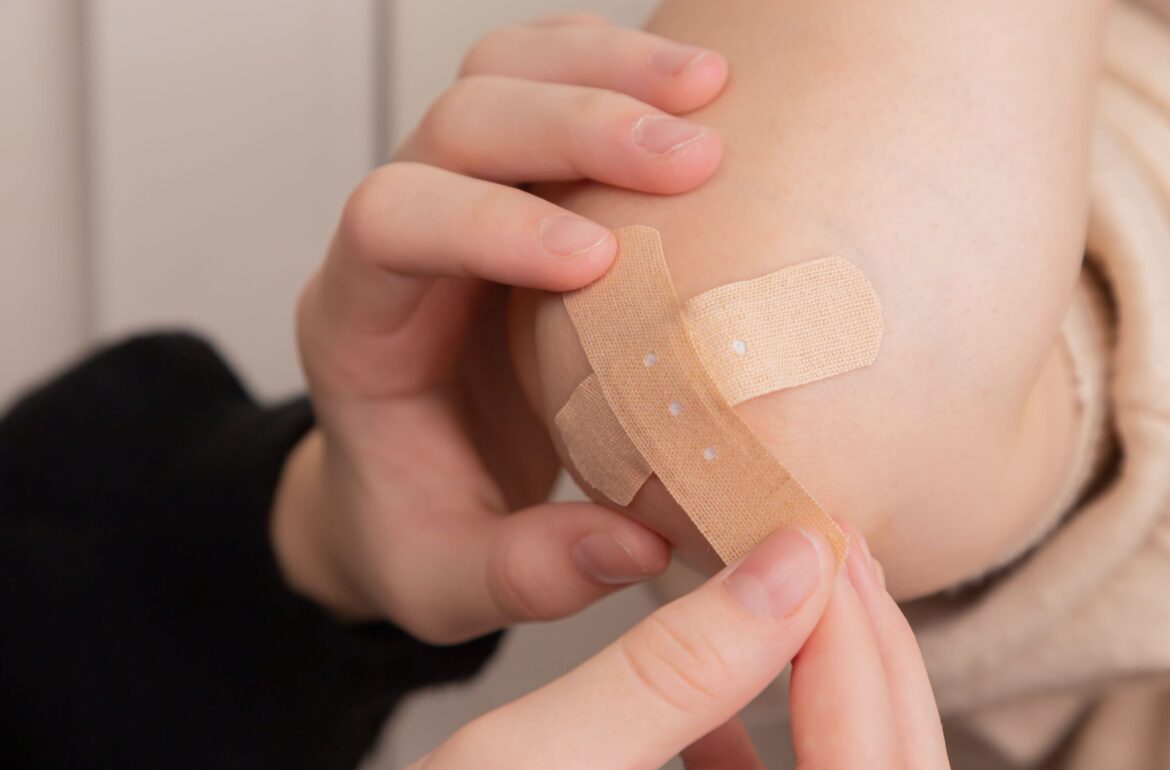Poorly healing wounds are a hidden epidemic that is rarely talked about. In more severe cases, they are treated with oral antibiotics, which can cause systemic side effects. This doctoral thesis from the University of Tartu looks at new solutions, i.e. nano- and microfiber wound dressings that release antibiotics directly onto the wound.
“Currently, there is no suitable way of administering antibiotics directly onto a wound,” says Liis Preem, a junior lecturer and doctoral student at the Institute of Pharmacy of the University of Tartu. “There are creams and ointments, but the release of the drug cannot be controlled. It is therefore difficult to achieve consistently appropriate concentrations of antibiotics for the wound, which is necessary for effective and safe treatment and for preventing drug resistance.”
Another problem with creams and ointments is that in order to apply them to the wound, the dressing must be removed several times a day. This can be painful and uncomfortable for the patient, making it less likely for the patient to stay consistent. It may also damage the healing wound. “Therefore, the administration of antibiotics directly onto the wound with the current solutions is not easy,” she says.
Due to hard-to-heal wounds being a major problem in countries with an ageing population and medicine administration becoming more regulated to avoid antibiotic resistance, new treatments are being sought around the world, according to Preem. Therefore, in her doctoral dissertation, she prepared a selection of wound dressings containing various antibiotics, from which the release of the drug could be controlled.
Prepare, test, clean
“First, I developed specific wound dressings and tried to find out what factors influence the release of the drug from them,” Liis Preem describes the course of her work. As electrospun wound dressings are still relatively new, Preem was interested in the important parameters in their design, ways to check their effectiveness, and what happens to the dressings during sterilisation.
According to the junior lecturer, the most important thing about the electrospun antibacterial wound dressing is that it can release a sufficient amount of the drug over a longer period of time. To achieve this, dressing makers have to follow certain guidelines.
“The choice of materials is key: for example, how water repellent the polymer used to make the dressing is or whether the drug and polymer are compatible,” she describes. “This affects the behaviour of the wound dressing when exposed to liquids, which in turn is associated with the release of the drug.” For example, in her work with one of the drugs studied, she showed that its release depended on the rate at which liquid penetrated the dressing. As the liquid penetrated the thicker dressing more slowly, it was possible to control the release of the drug by changing the thickness of the dressing.
Second, Preem looked for ways to check the effectiveness and quality of the wound dressings she developed. To some extent, she could look to methods used for other dosage forms.
For example, a similar method that is also used in tablets and capsules has been used to study the release of a drug from wound dressings where the release medium is a buffer solution, i.e. a large amount of liquid that is constantly mixed. “However, when we think about a wound specifically, its conditions are quite different,” she says. “For example, there is not as much free liquid in a wound.” In her work, she tried to find methods that would allow the release of the drug to be studied in a model more similar to the conditions of a wound.
Third, according to Preem, it was important to find suitable methods for sterilising the dressings and to find out how different treatments affect the dressings. “For example, with one sterilisation method, plasma treatment, we saw that instead of a slow release of the drug, after the treatment it released practically immediately,” she describes. In addition, the drug may be significantly degraded during sterilisation and the mechanical properties of the dressings, for example, may change.
“This has to be taken into account,” Preem concludes. “Otherwise you will make something that works and then, after sterilisation, realise that the properties of the dressing have changed beyond recognition.”
Like your own skin
According to Liis Preem, wound dressings like this are being researched and developed in many research groups and universities around the world. “At the same time, there has been no big leap in the pharmaceutical industry that would make these new wound dressings accessible for patients,” she admits. There are already a few electrospun products on the market, but these are used in very specific cases or do not contain the necessary drugs.
“In addition to the drug content, this type of dressing is also made attractive by its fibrous structure, which is very good for the wound even without any drugs,” explains Preem. “It mimics your own skin, which is the best material to cover a wound.” According to her, the fibrous and highly porous dressing allows oxygen to pass through while protecting the wound from microbes. In addition, it allows the wound exudate to be well absorbed, maintaining a suitable moisture balance in the wound, and promotes the movement of cells to the wound so that it could heal.
According to the junior lecturer, poorly healing wounds are a much bigger concern than people think. “It is a hidden epidemic, as it is not that noticeable, but in reality, a huge number of people are suffering from it,” she says. “As society ages, the problem is likely to get worse.” Chronic wounds are more common in older, overweight and diabetic people, among others. These wounds often occur on the feet and toes, where the blood supply is poor.
“One of the main reasons chronic wounds do not heal is the activity of bacteria and the presence of biofilm on the wound,” says Preem. Although the infection may not be visible to the naked eye, the balance between the body itself and the microbes may already be disturbed, so new antibacterial treatments are very welcome. “At the same time, it is important that the antibacterial treatment is of high quality, so as not to add to the growing problem of antibiotic resistance in the world,” the junior lecturer adds.
According to Preem, electrospinning as a method is already old, dating back to the first half of the last century, but now it has been rediscovered and has found many new uses in recent decades. “It is used, for example, to make filters, as the fibrous and porous material is well suited for this,” she explains. Electrospinning is also used in electronics, energy storage, the textile industry and biomedicine for wound dressings, implants and drug delivery systems. “These fibres are really fine and on the nano- or microscale, i.e. they are less than a micrometer or just a few micrometers in diameter,” describes Preem.
Although electrospinning is still used less in medicine than in certain other fields, the junior lecturer believes a breakthrough is imminent. “I am absolutely convinced that at some point in the not too distant future, dressings like this will be available in pharmacies,” she says.
The translation of this article from Estonian Public Broadcasting science news portal Novaator was funded by the European Regional Development Fund through Estonian Research Council.
 Back
Back



